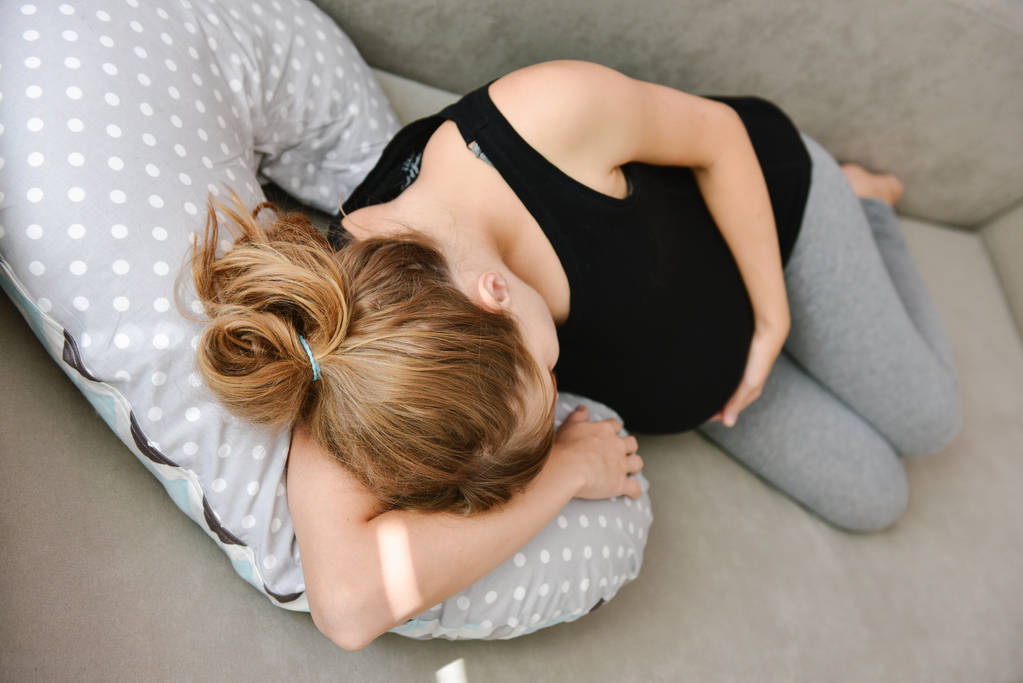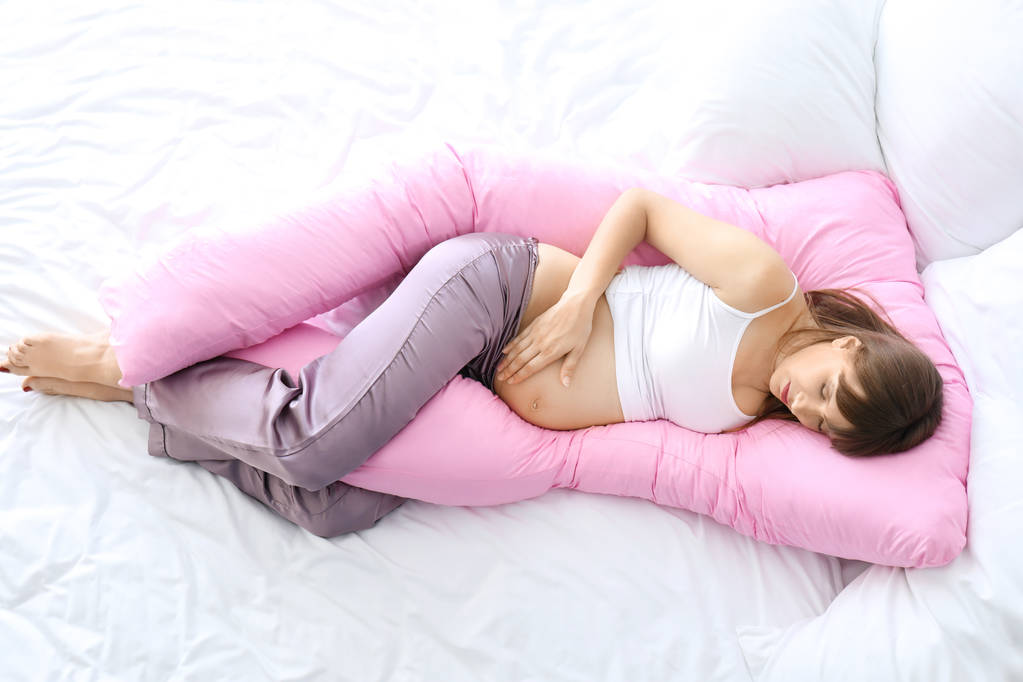Learn about the best sleeping positions to relieve pelvic girdle pain and improve your sleep quality.
Discovering the Best Sleeping Positions to Alleviate Pelvic Girdle Pain
If you’re experiencing pelvic girdle pain, you know how important it is to find relief, especially when it comes to getting a good night’s sleep. In this article, we’ll uncover the best sleeping positions that can help alleviate your pelvic girdle pain, so you can finally get the rest you deserve.

Understanding Pelvic Girdle Pain
Pelvic girdle pain is a common condition that affects many individuals, particularly pregnant women. It refers to the pain experienced in the pelvic area, including the lower back, hips, and groin. The pain can range from mild discomfort to severe and debilitating.
What is Pelvic Girdle Pain?
Pelvic girdle pain, also known as symphysis pubis dysfunction (SPD), is caused by the instability of the pelvic joints. The hormones released during pregnancy loosen the ligaments holding the pelvic joints together, leading to pain and discomfort in the area. However, it’s not just pregnant women who can experience pelvic girdle pain; it can also affect athletes, individuals with previous injuries, and those with certain medical conditions.
When it comes to pregnant women, the weight and pressure of the growing baby can put additional strain on the pelvic area, exacerbating the pain. Changes in posture during pregnancy can also contribute to the development of pelvic girdle pain. As the body adjusts to accommodate the growing baby, the center of gravity shifts, putting more stress on the pelvic joints and muscles.
For non-pregnant individuals, pelvic girdle pain can be caused by various factors. Injuries, such as falls or accidents, can lead to instability in the pelvic joints, resulting in pain and discomfort. Muscle imbalances, where certain muscles are stronger or tighter than others, can also contribute to the development of pelvic girdle pain. Additionally, certain medical conditions, such as arthritis, can affect the stability of the pelvic joints and lead to pain.
Symptoms Associated with Pelvic Girdle Pain
Individuals with pelvic girdle pain may experience a wide range of symptoms. The most common symptom is pain in the lower back, hips, groin, and thighs. This pain can vary in intensity and may be felt on one or both sides of the body. Some individuals may also experience a clicking or grinding sensation in the pelvic area when moving.
In addition to pain, individuals with pelvic girdle pain may have difficulty walking or performing everyday activities that involve the pelvis. Tasks such as sitting and getting up from a chair, climbing stairs, or even standing for extended periods of time can be challenging and painful. The pain and limitations caused by pelvic girdle pain can have a significant impact on an individual’s quality of life, affecting their ability to work, exercise, and engage in social activities.
It’s important to note that pelvic girdle pain is a complex condition that can vary from person to person. The severity of the pain and the specific symptoms experienced can differ, depending on the underlying cause and individual factors. Seeking proper medical evaluation and treatment is essential for managing pelvic girdle pain and improving overall well-being.
The Importance of Sleep in Pain Management
Sleep plays a vital role in the body’s healing process, and lack of sleep can exacerbate pain. During sleep, the body repairs and rejuvenates itself, allowing it to better cope with pain. Getting enough restful sleep can significantly improve your overall well-being and help manage pelvic girdle pain more effectively.
The Role of Sleep in Healing
While you sleep, your body releases hormones that promote tissue repair and reduce inflammation. This is particularly important if you’re dealing with pelvic girdle pain, as it gives your body the opportunity to heal and recover from the stress placed on the pelvic joints and muscles.
During sleep, your brain also consolidates memories and processes emotions, which can have a direct impact on your pain perception. Research has shown that a good night’s sleep can enhance your ability to cope with pain and improve your overall pain tolerance.
Furthermore, sleep is essential for the proper functioning of your immune system. When you sleep, your immune system releases proteins called cytokines, which help fight off infections and inflammation. Without enough sleep, your immune system may not function optimally, making it harder for your body to combat pain and heal injuries.
How Lack of Sleep Can Exacerbate Pain
On the flip side, not getting enough sleep can intensify your pain levels. Sleep deprivation can lower your pain threshold, making you more sensitive to discomfort. Studies have shown that sleep loss can increase the perception of pain, making even mild pain feel more severe.
Moreover, lack of sleep can disrupt the body’s natural pain-inhibiting mechanisms. When you sleep, your body releases endorphins, which are natural painkillers. These endorphins can help reduce the intensity of pain signals sent to your brain. However, when you’re sleep deprived, your body may not produce enough endorphins, making it harder to manage pain effectively.
Additionally, sleep deprivation can have a negative impact on your mental health, leading to increased stress and anxiety. Chronic pain and sleep disturbances often go hand in hand, creating a vicious cycle. The more pain you experience, the harder it becomes to sleep, and the less sleep you get, the more your pain intensifies.
Furthermore, lack of sleep can impair your cognitive function, making it harder to concentrate and make decisions. This can further contribute to increased stress and frustration, which can exacerbate your pain symptoms.
In conclusion, sleep is a crucial component of pain management, particularly for individuals dealing with pelvic girdle pain. Adequate sleep allows your body to heal, reduces inflammation, and enhances your pain tolerance. On the other hand, sleep deprivation can intensify pain, lower pain thresholds, and negatively impact your mental well-being. Therefore, prioritizing good sleep hygiene and seeking professional help for sleep disorders can significantly improve your ability to manage pain effectively.
Exploring Different Sleeping Positions
Now that we understand the importance of sleep in managing pelvic girdle pain, let’s explore different sleeping positions that can provide relief. Remember, everyone is unique, so it may take some trial and error to find the position that works best for you.
The Supine Position: Pros and Cons
Lying on your back, also known as the supine position, can be both beneficial and challenging for individuals with pelvic girdle pain. On the one hand, it allows for even weight distribution and can alleviate pressure on specific areas. This position is particularly helpful for individuals with hip pain, as it can reduce strain on the joints. However, if you’re pregnant or experience discomfort in this position, placing a pillow under your knees can help relieve strain on the lower back and pelvis. Additionally, using a supportive mattress and pillow can further enhance the benefits of the supine position, ensuring proper spinal alignment and reducing the risk of developing pressure points.
The Prone Position: Pros and Cons
Sleeping on your stomach, referred to as the prone position, is generally not recommended for individuals with pelvic girdle pain. This position can put additional pressure on the pelvis and strain the lower back. However, if you still find comfort in this position, consider using a soft pillow under your hips to reduce the strain on your lower back. It’s important to note that sleeping in the prone position can also affect your breathing and neck alignment, so it’s crucial to be mindful of these factors and make adjustments accordingly. If you experience any discomfort or notice increased pain while sleeping in the prone position, it’s best to switch to a different sleeping position that provides better support and alignment for your body.
The Fetal Position: Pros and Cons
The fetal position, where you lie on your side with your legs curled up, is a popular choice for many individuals. It can help alleviate pressure on the pelvis and promote spinal alignment. This position is especially beneficial for pregnant women, as it can improve blood circulation and reduce the risk of developing complications such as edema and varicose veins. To further enhance the benefits of this position, place a pillow between your knees to support your hips and lower back. This will help maintain proper spinal alignment and prevent any strain on your joints. Additionally, using a firm mattress and a supportive pillow that conforms to the shape of your neck and head can further optimize the benefits of the fetal position.
Remember, finding the right sleeping position is essential for managing pelvic girdle pain and ensuring a restful night’s sleep. Experiment with different positions, pillows, and mattress firmness levels to find what works best for you. It’s also important to consult with a healthcare professional or physical therapist who can provide personalized recommendations based on your specific condition and needs. With the right combination of sleeping position and support, you can minimize pain, improve sleep quality, and wake up feeling refreshed and rejuvenated.
Best Sleeping Positions for Pelvic Girdle Pain
Why Position Matters
Choosing the right sleeping position is crucial for individuals with pelvic girdle pain. The goal is to minimize strain on the pelvic joints and muscles, allowing them to relax and heal while you sleep. These positions can help reduce discomfort and promote better sleep quality.
Recommended Positions for Alleviating Pain
- Side lying position: Sleeping on your side with a pillow between your legs can help keep your spine aligned and reduce pressure on the pelvis.
- Back with elevated legs: Lying on your back with your legs elevated on a pillow can provide relief for some individuals. The elevation helps reduce gravitational pressure on the pelvis and lower back.
- Semi-reclined position: Propping yourself up with pillows to achieve a semi-reclined position can help redistribute weight and alleviate pelvic pain.
Additional Tips for Managing Pelvic Girdle Pain at Night
In addition to finding the right sleeping position, there are other strategies you can implement to manage pelvic girdle pain and improve your sleep quality.

Use of Pillows for Support
Experiment with different types and sizes of pillows to find the right combination that provides optimal support for your body. Utilize pillows to cushion your hips, support your back, and align your spine for a comfortable night’s sleep.
The Role of Mattress and Bedding
Investing in a quality mattress that provides adequate support can make a significant difference in relieving pelvic girdle pain. Look for a mattress that contours to your body, supports your spine, and reduces pressure points. Additionally, using a body pillow or mattress topper can further enhance your comfort and alleviate pain.
Relaxation Techniques Before Bed
Implementing relaxation techniques before bed can help calm your body and mind, making it easier to fall asleep and stay asleep. Consider incorporating activities such as meditation, deep breathing exercises, gentle stretches, or a warm bath into your bedtime routine.
By understanding the best sleeping positions for pelvic girdle pain and implementing these additional strategies, you can finally reclaim restful nights and find relief from discomfort. Remember, it’s essential to consult with a healthcare professional for personalized advice tailored to your specific condition. Sleep well, and sweet dreams!



